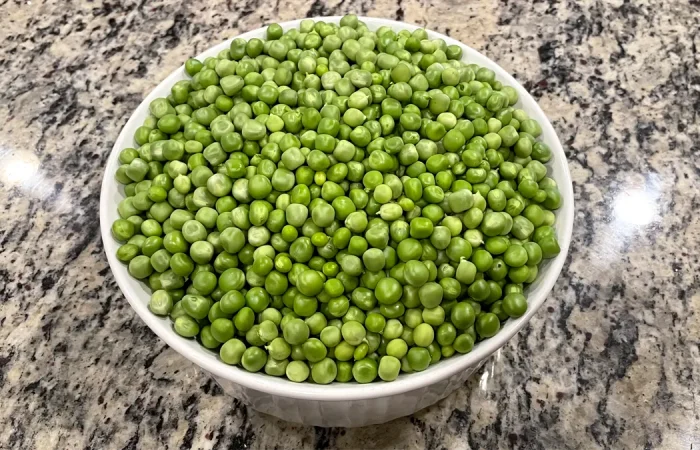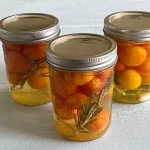Preserving the vibrant flavors and nutritional benefits of peas can be a delightful endeavor for any food enthusiast. Among the various preservation methods, freezing emerges as a stellar choice, offering a convenient way to enjoy the taste of freshly harvested peas long after the growing season has ended. We will explore the art of freezing peas, from selecting the perfect pea varieties to understanding the science behind flash freezing.
Choosing the Right Type of Peas for Freezing
Selecting the right type of peas is a crucial step in ensuring the success of your freezing endeavors. Different pea varieties possess unique characteristics that influence their taste, texture, and overall suitability for freezing. Here’s why choosing the right peas matters:
Flavor Preservation
The flavor profile of peas can vary significantly between different types. Some peas, like sweet peas, boast a sugary taste, while others, like garden peas, offer a more robust flavor. By choosing a pea variety with a taste profile you enjoy, you enhance the chances of preserving that delightful flavor through freezing.
Texture Retention
The texture of peas can vary from tender and crisp to more starchy. For freezing, it’s essential to select peas with a texture that aligns with your culinary preferences. Sweet peas, known for their tenderness, often freeze well while maintaining their pleasing texture.
Freezing Resilience
Not all peas respond to freezing in the same way. Some varieties are better suited to withstand the freezing process without compromising their quality. Understanding the freezing resilience of each type of pea ensures that your efforts result in frozen peas that retain their color, nutritional content, and overall appeal.
Versatility in Dishes
Different pea varieties lend themselves to various culinary applications. Consider how you plan to use your frozen peas in dishes. When incorporating them into soups, stir-fries, or side dishes, choosing a pea variety that aligns with your preferred cooking style enhances the versatility of your frozen pea supply.

Types of Peas Ideal for Freezing
Now that we understand the significance of choosing the right peas for freezing, let’s look into the specific types ideal for this preservation method.
Each pea variety brings its charm to the freezing process, ensuring a diverse range of flavors and textures in your freezer stock.
Sweet Peas
Characteristics: Sweet peas are aptly named for their naturally sweet and delicate flavor. These peas are known for their tenderness and are a popular choice for freezing due to their ability to retain their sweetness even after freezing.
Best Varieties: Look for varieties such as “Green Arrow” or “Wando,” which are celebrated for their exceptional sweetness and freezing resilience.
Garden Peas
Characteristics: Garden peas, also known as English peas, offer a more robust and slightly starchy flavor compared to sweet peas. Their plump texture makes them an excellent candidate for freezing while maintaining their distinctive taste.
Recommended Varieties: Consider varieties like “Lincoln” or “Maestro” for freezing, as they are known for their flavor and suitability for preservation.

Snow Peas
Characteristics: Snow peas are prized for their flat, edible pods and mild, slightly sweet flavor. While often enjoyed fresh, they can also be successfully frozen, retaining their unique crunchiness.
Noteworthy Varieties: Opt for varieties like “Oregon Sugar Pod” or “Melting Sugar” for their excellent freezing qualities and the ability to add a crisp texture to various dishes.
Flash Freezing Process
Flash freezing is a rapid freezing technique that involves freezing food items at extremely low temperatures in a short period. This swift process helps lock in the freshness, flavor, and nutritional value of peas by minimizing the formation of large ice crystals, which can compromise texture and quality.
Benefits of Flash Freezing for Preserving Pea Quality
Preserving Freshness
Flash freezing ensures that peas are frozen quickly, preserving their fresh-picked taste. The rapid freezing process prevents the formation of ice crystals, maintaining the integrity of the peas’ cellular structure and preventing the development of freezer burn.
Retention of Nutrients
The quick freezing minimizes nutrient loss, allowing frozen peas to retain a higher nutritional value compared to slow freezing methods. Essential vitamins and minerals remain locked within the peas, offering a nutritious addition to your meals.
Maintains Texture
Flash freezing helps preserve the texture of peas. By minimizing the time it takes for the peas to freeze, the formation of large ice crystals is reduced, preventing damage to the cell walls. This results in frozen peas that, when properly thawed, closely resemble the texture of fresh peas.
Convenience in Cooking
Flash-frozen peas are individually frozen, preventing them from clumping together. This makes it easy to take out just the desired amount for cooking without having to thaw the entire batch. It adds convenience to your culinary adventures.

Step-by-Step Guide on How to Flash Freeze Peas at Home
Harvest or Purchase Fresh Peas:
- Choose fresh and high-quality peas. Harvest from your garden or select peas from a reliable source.
Shell and Clean:
- Shell the peas, removing them from the pods. Rinse the peas under cold water to remove any dirt or debris.
Blanching:
- Quickly blanch the peas by immersing them in boiling water for a short duration, typically 1-2 minutes. This helps halt enzymatic activity and ensures optimal preservation.
Cool Rapidly:
- Transfer the blanched peas to an ice bath immediately after blanching. This rapid cooling process helps maintain the quality of the peas.
Drain Excess Water:
- Once cooled, drain the excess water from the peas thoroughly.
Spread on a Tray:
- Spread the peas in a single layer on a baking sheet or tray. Ensure they are not touching each other to facilitate quick freezing.
Flash Freeze:
- Place the tray in the freezer. Flash-freeze the peas for a few hours or until they are individually frozen.
Transfer to Storage Bags:
- Once the peas are individually frozen, transfer them to airtight freezer bags or containers. Remove excess air to prevent freezer burn.
- You can also vacuum seal them into specific portion sizes for easy use.
Storing Frozen Peas
Proper Packaging for Frozen Peas
The key to maintaining the quality of your flash-frozen peas lies in proper packaging. Proper packaging helps protect the peas from freezer burn, ice crystals, and odors, ensuring they remain as fresh as the day they were frozen.
Airtight Freezer Bags:
- Use high-quality, airtight freezer bags to package your peas. Squeeze out as much air as possible before sealing to prevent freezer burn.
Vacuum-Sealed Bags:
- Consider vacuum-sealed bags for an extra layer of protection. Vacuum sealing removes air, reducing the risk of ice crystal formation and freezer burn.
Freezer-Safe Containers:
- Opt for sturdy, freezer-safe containers with tight-fitting lids. These containers shield the peas from air exposure and potential damage.
Individual Portion Packaging:
- For added convenience, consider portioning the peas into individual serving sizes before freezing. This allows you to take out only what you need for a particular meal without thawing the entire batch.

Tips for Organizing Frozen Peas in the Freezer:
Label Containers:
- Clearly label containers with the date of freezing and the type of peas. This helps you keep track of freshness and ensures you use the oldest peas first.
Stack or Store Flat:
- Maximize freezer space by stacking containers or laying them flat. This prevents crushing and allows for better visibility of the contents.
Rotate Stock:
- Practice the “first in, first out” rule. Consume the oldest frozen peas before using newer batches to maintain freshness.
Cooking with Frozen Peas
Quick Ideas for Incorporating Frozen Peas into Meals
Frozen peas are not only a convenient freezer staple but also a versatile ingredient that can add to a variety of dishes. Here are some quick and creative ideas for incorporating frozen peas into your meals:
Stir-Fries and Fried Rice:
- Add a burst of color and sweetness to stir-fries or fried rice by tossing in a handful of frozen peas during the cooking process. They cook quickly and contribute a vibrant element to the dish.
Soups and Stews:
- Enhance the nutritional content of soups and stews by stirring in frozen peas just before serving. Their vibrant green color and tender texture make a delightful addition to hearty broths.
Pasta Dishes:
- Mix frozen peas into pasta dishes for a pop of color and added nutrition. They pair well with creamy Alfredo sauces, light olive oil-based pastas, or tomato-based sauces.
Salads:
- Thawed frozen peas make a refreshing addition to salads. Toss them into green salads, pasta salads, or grain bowls for a burst of sweetness and texture.
Quiches and Frittatas:
- Incorporate frozen peas into quiches or frittatas for a delightful texture and flavor contrast. They pair well with eggs, cheese, and various herbs.
Vegetable Sides:
- Steam or sauté frozen peas with other vegetables as a quick and nutritious side dish. Season with herbs and spices for added flavor.
Curries:
- Add frozen peas to vegetable or meat curries for a touch of sweetness. They absorb the flavors of the curry while contributing their own vibrant color.
Retaining Nutritional Value During Cooking
To ensure you retain the maximum nutritional value when cooking with frozen peas, consider the following tips:
Minimal Cooking Time:
- Cook frozen peas for the minimum required time to preserve their nutritional content. Overcooking can result in nutrient loss.
Use Cooking Liquids:
- If you’re boiling or steaming peas, use minimal water to retain water-soluble vitamins. Consider using vegetable broth for added flavor.
Avoid High Heat:
- When cooking peas, use medium to low heat to prevent the breakdown of sensitive nutrients. This is especially important for vitamins like vitamin C.
Include in Raw Preparations:
- For salads or dishes where raw peas work well, consider adding them directly without cooking to preserve their nutritional integrity.
Combine with Vitamin C-rich foods:
- Pairing frozen peas with foods rich in vitamin C, such as tomatoes or bell peppers, can enhance the absorption of iron from the peas.
So, seize the opportunity to preserve the essence of the harvest season and enjoy the taste of fresh peas in every season. Your culinary creations will thank you, and your taste buds will delight in the burst of green goodness that frozen peas bring to your table. Happy freezing!
Try some of the other Freezing Recipes available to you:
Other Pea Recipes
Looking for additional recipes including peas?
Recipe Card
Freezing Peas
Equipment
- Freezer
Ingredients
- Peas
Instructions
- Harvest or Purchase Fresh Peas:Choose fresh and high-quality peas. Harvest from your garden or select peas from a reliable source.
- Shell and Clean:Shell the peas, removing them from the pods. Rinse the peas under cold water to remove any dirt or debris.
- Blanching:Quickly blanch the peas by immersing them in boiling water for a short duration, typically 1-2 minutes. This helps halt enzymatic activity and ensures optimal preservation.
- Cool Rapidly:Transfer the blanched peas to an ice bath immediately after blanching. This rapid cooling process helps maintain the quality of the peas.
- Drain Excess Water:Once cooled, drain the excess water from the peas thoroughly.
- Spread on a Tray:Spread the peas in a single layer on a baking sheet or tray. Ensure they are not touching each other to facilitate quick freezing.
- Flash Freeze:Place the tray in the freezer. Flash-freeze the peas for a few hours or until they are individually frozen.
- Transfer to Storage Bags:Once the peas are individually frozen, transfer them to airtight freezer bags or containers. Remove excess air to prevent freezer burn.You can also vacuum seal them into specific portion sizes for easy use.
Robin
Robin Phelps has been preserving food for her family for over 20 years. Today, Robin is a full-time home preservation blogger and coach. Join Robin to learn how to easily make delicious and safe homemade preserved items.






No Comment! Be the first one.